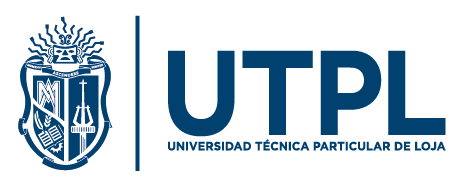Alternative Schools and a Profile of its Teachers: A Study of the Perception of the Role of Educators in Alternative Schools
Keywords:
Alternative Education, Puerto Rico, Teacher DevelopmentAbstract
Alternative Schools represent an important bridge for youth who have abandoned school and search for second educational opportunities. The teachers in these schools have particular skills and abilities related to the socio-educational skills that are required when working with this population of youth. Although little is known about these teachers, the majority come from a traditional teaching background and make the transition to the alternative system accidentally. In this paper, we present the profile of the teachers that work in Alternative Schools in Puerto Rico in order to understand their academic and professional needs and strengths for future professional development.
Downloads
References
Asociación Estatal de Educación Social (ASEDES) y Consejo General de Colegios de Educadoras y Educadores Sociales de España (CGCEES) (2007) Documentos profesionalizadores, Barcelona, ASEDES. En línea: http://www.eduso.net/archivo/docdow.php?id=143 [Consultado el 2 de enero de 2016].
Alumnos de la escuela Barbiana (1986) Carta a una maestra. Barcelona: Hogar del Libro. Octava edición.
Barrientos Soto, Andrea; González-Gijón, Gracia y Soriano Díaz, Andrés (2017) A Perspective on Alternative Education in Puerto Rico: An Opportunity for Social and Educational Inclusion of Students who have Abandoned School, The International Journal of Humanities Education, Vol. 15(2), pp. 17-27.
Barrientos Soto, Andrea (2016) Alternative Education and the Development of Resilience in Youth who have Abandoned School in Puerto Rico, Revista de Paz y Conflictos Vol. 9(2), pp. 223-243.
Carbonell Sebarroja, Jaume (2016) Pedagogías del siglo XXI: Alternativas para la innovación educativa, Barcelona, Octaedro.
Departamento de Educación del Estado Libre Asociado de Puerto Rico (2014) Proyecto CASA. San Juan, Puerto Rico. En línea: http://www.de.gobierno.pr/proyecto-casa-para-estudiantes-en-alto-riesgo [Consultado el 13 de junio de 2016].
El Nuevo Día (2012) Sin control la deserción escolar en Puerto Rico. 17 de diciembre de 2012. En línea: http://www.elnuevodia.com/noticias/locales/nota/sincontrolladesercionescolarenpuertorico-2011628/ [Consultado el 11 de agosto de 2015].
El Nuevo Día (2017) El Departamento de Educación cerrará 184 escuelas públicas. En línea:
https://www.elnuevodia.com/noticias/locales/nota/eldepartamentodeeducacioncerrara184escuelaspublicas-2318040/ [Consultado el 5 de mayo de 2017].
Gardner, Morgan and Crockwell, Angela (2006) Engaging Democracy and Social Justice in Creating Educational Alternatives: An Account of Voice and Agency for Marginalized Youth and the Community. The Innovation Journal: The Public Sector Innovation Journal, Vol. 11(3), pp. 1-19.
Gutiérrez, Francisco y Prieto, Daniel (1999) Mediación pedagógica, Buenos Aires, Ediciones Ciccus-La Crujía, pp. 23-57.
IBM (2014) Manual del usuario del sistema básico de IBM SPSS Statistics 210. En línea: ftp://public.dhe.ibm.com/software/analytics/spss/documentation/statistics/20.0/es/client/Manuals/IBM_SPSS_Statistics_Core_System_Users_Guide.pdf
Instituto de Política Educativa para el Desarrollo Comunitario (IPEDCO) (2013) El perfil del estudiante: Nuevo desafío para la educación puertorriqueña, San Juan, Nyvea Silva Herrera Editora/Universidad del Sagrado Corazón.
Irizarry, Rafael, Quintero, Ana Helvia, y Pérez Prado, Zenia (2006) El joven desertor y la necesidad de un modelo educativo alternativo para su desarrollo integral: La experiencia de Nuestra Escuela, Revista Pedagogía, nº 39, Diciembre, San Juan.
Jiménez Bautista, Francisco (1997) Juventud y racismo. Actitudes y comportamiento en Granada, Granada, IMFE.
Khan, Seema, Emilie Combaz and Erika McAslan Fraser (2015) Social Exclusion: Topic Guide, Birmingham, GSDRC, University of Birmingham.
Kinnear, Thomas & Taylor, James (1998) Investigación de Mercados. Un Enfoque Aplicado. Santafé de Bogotá, McGraw-Hill.
Lange, Cheryl and Sletten, Sandra (2002) Alternative Education: A Brief History and Research Synthesis, Washington, U.S., Department of Education.
Prieto Castillo, Daniel (2005) La enseñanza en la Universidad, Mendoza, Argentina, Editorial Centro universitario/Parque General San Martín.
Sliwka, Anne (2012) The Contribution of Alternative Education. Organization for Economic Cooperation and Development (OECD). En línea: http://www.oecd.org/edu/ceri/40805108.pdf [Consultado el 2 de septiembre de 2017].
Thomson, Pat and Penacchia, Jodie (2014) What’s the alternative? Effective support for young people disengaging from the mainstream, School of Education, The University of Nottingham.
Valenciano Canet, Grettel (2009) Construyendo un concepto de Educación Inclusiva: Una experiencia compartida, en Santo Martín, María del Pilar y Venegas Renauld, María Eugenia (Coords.) Aspectos claves de la Educación Inclusiva, Salamanca, Publicaciones Instituto Universitario de Integración en la Comunidad, pp. 13-24.
Zabalza, Miguel Ángel (1995) Diseño y desarrollo curricular, Madrid, Narcea.
Downloads
Published
How to Cite
Issue
Section
License
Aquellos autores/as que tengan publicaciones con esta revista, aceptan los términos siguientes:
- Los autores/as conservarán sus derechos de autor y garantizarán a la revista el derecho de primera publicación de su obra, el cuál estará simultáneamente sujeto a la Licencia de reconocimiento de Creative Commons 4.0 BY-NC-SA que permite a terceros compartir la obra siempre que se indique su autor y su primera publicación esta revista.
- Los autores/as podrán adoptar otros acuerdos de licencia no exclusiva de distribución de la versión de la obra publicada (p. ej.: depositarla en un archivo telemático institucional o publicarla en un volumen monográfico) siempre que se indique la publicación inicial en esta revista.
- Se permite y recomienda a los autores/as difundir su obra a través de Internet (p. ej.: en archivos telemáticos institucionales o en su página web) antes y durante el proceso de envío, lo cual puede producir intercambios interesantes y aumentar las citas de la obra publicada. (Véase El efecto del acceso abierto).
-
Los autores han respetado la política de autoría de esta revista.






